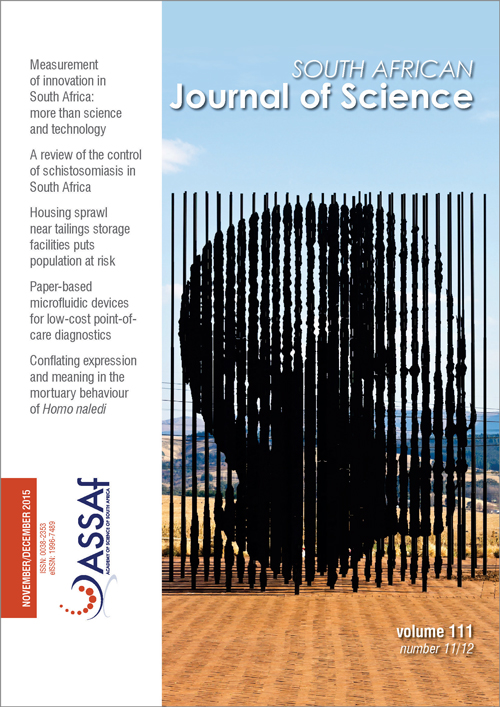Potential human impact on the environmental central niche of the chacma baboon
DOI:
https://doi.org/10.17159/sajs.2015/20140279Keywords:
Papio ursinus, habitat distribution, GIS, core habitat, anthropogenic impactAbstract
We assessed the human impact on regions identified as the environmental central niche for the chacma baboon (Papio ursinus) across southern Africa. This central niche is the area within an animal’s natural range that is most insulated from changes to the environmental variables that influence that animal’s distribution. We used an environmental envelope model constructed with geographic information system software to predict the geographic extent of the central niche. The predicted chacma baboon central niche was 389 000 km2, with substantial overlap with human settlements in several countries. Of note is that although Botswana contains nearly 60 000 km2 of predicted central niche, the International Union for the Conservation of Nature chacma baboon distribution map implies that much of this area is uninhabited by baboons. A regional assessment of the province of KwaZulu-Natal (South Africa) suggests more than 95% of its central niche is uninhabited. Additionally, the very limited and likely disturbed central niche area in Lesotho coupled with the unknown status of chacma baboons within Lesotho warrants further attention. Overall, it appears likely that significant proportions of the predicted central niche in southern Africa are currently uninhabited by the chacma baboon. These uninhabited areas correspond with areas of high human population density and anthropogenic land alteration. The remaining central niche areas that are still inhabited are potentially key areas for conservation and are important for ensuring the sustainability of future populations. However, these areas may be undergoing degradation whilst also becoming more inaccessible to baboons, thus increasing the difficulty of conservation efforts. This preliminary assessment highlights the urgent need for detailed assessments at a finer scale.
Downloads
Published
Issue
Section
License

All articles are published under a Creative Commons Attribution 4.0 International Licence
Copyright is retained by the authors. Readers are welcome to reproduce, share and adapt the content without permission provided the source is attributed.
Disclaimer: The publisher and editors accept no responsibility for statements made by the authors
How to Cite
- Abstract 984
- PDF 642
- EPUB 2418
- XML 248
- Supplementary Material 225













.png)